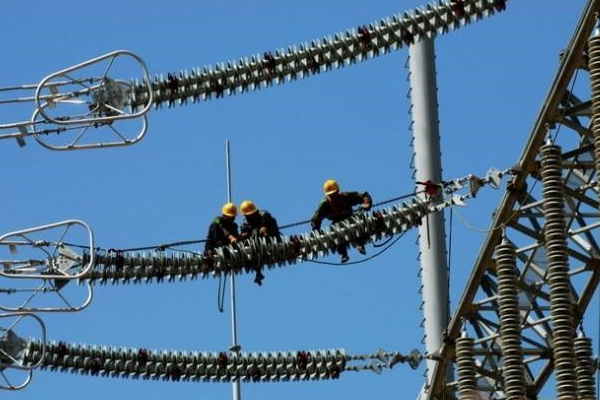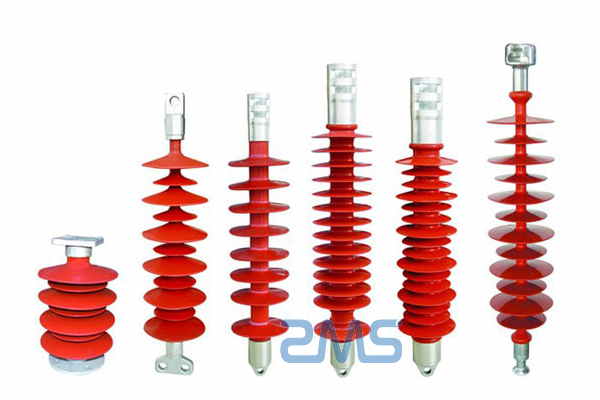What Is An Overhead Line Insulator?
On one end of the high-voltage power line connection tower hangs a lot of disc-shaped insulators, which are designed to increase the creepage distance, usually made of glass or ceramic, and are called overhead line insulators.
An overhead line insulator is a special insulating control that can play an important role in overhead transmission lines and is a device installed between conductors of different potentials or between conductors and ground potential components that can withstand the effects of voltage and mechanical stress.
Earlier, cable insulators are mainly used for poles, with the development and needs of society, gradually applied to high-type high-voltage power line connection towers. It is mainly used to increase the creepage distance (creepage distance is the short spatial distance between two conductive parts. Or, they between a conductive part and equipment and easy to contact surface measured along the surface of the insulating material.)
Climbing distance = surface distance / highest system voltage, depending on the degree of fouling, heavy fouling areas generally use a climbing distance of 31 mm / per kV.
Insulators have two basic roles in overhead transmission lines: supporting the conductor and preventing the current from returning to the ground.
To ensure these two basic functions, insulators should not fail due to various electromechanical stresses caused by changes in the environment and electrical load conditions, which would otherwise damage the use and operating life of the entire line.

Overhead Insulators Can Be Classified By Function And Structure As Follows
1. Suspension insulators
Used in high-voltage and ultra-high-voltage transmission lines for hanging or tensioning wires and insulating them from towers.
Suspension insulators have high electromechanical strength and are widely used at present because they are suitable for various voltage levels and strength needs through different string groups.
Among the suspension insulators, they can be further divided into disk-shaped suspension insulators and rod-shaped suspension insulators.
There are two categories of disc-type suspension insulators, ordinary type, and anti-fouling type.
The ordinary type is suitable for general industrial areas, while the anti-fouling type has a larger creepage distance and easier shape for weather cleaning compared with ordinary type insulators, which can reduce the size of towers when used in foul areas and has greater economic value.
The rod-shaped hanging composite insulator can effectively use the narrow corridor to open pressure to send electricity.
It is suitable for the technical transformation of the city network, can reduce the height of the tower, and can save a lot of manpower, material, and financial resources, due to its high bending strength.
It can prevent the porcelain cross insulator easy to appear in cascade fracture accidents, is the porcelain insulator can not replace the product.

2. Post insulator
They are mainly used for insulating and mechanically fixing busbars and electrical equipment in power plants and substations.
In addition, post insulators are often used as components of electrical equipment such as disconnect switches and circuit breakers.
Pillar insulators can be divided into pin-type pillar insulators and bar-type pillar insulators. Needle-type pillar insulators are mostly used in low-voltage distribution lines and communication lines, while bar-shaped pillar insulators are mostly used in high-voltage substations.
3. Porcelain Insulators
Insulators whose insulating parts are made of electrical ceramics. Electrical ceramics are baked from quartz, feldspar, and clay as raw materials.
The surface of porcelain insulators is usually covered with porcelain enamel to improve its mechanical strength, waterproof infiltration, and increase the smoothness of the surface. Among all kinds of insulators, porcelain insulators are the most commonly used.
4. Glass Insulators
Insulators made of tempered glass. Its surface is in a state of compression pre-stress, and if cracks and electric breakdown occur, the glass insulator will break into small pieces by itself, commonly known as “self-explosion”.
This feature makes the glass insulator in operation without “zero value” detection.
Zero-value insulators are insulators whose potential distribution is close to or equal to zero at both ends of the insulator during operation.
Zero value or low-value insulator impact: line wire insulation depends on the insulator string, due to manufacturing defects, or the role of external, insulator insulation performance will continue to deteriorate when the insulation resistance is reduced or zero is called low or zero value insulator. This is another major reason for the high rate of lightning trips, insulators are smooth, and can reduce the capacitive resistance between the wires to reduce the loss of current.

5. Polymer insulator
Also called a composite insulator. The insulator whose insulating parts are composed of glass fiber resin core rod and organic material sheath and umbrella skirt. It is characterized by small size, lightweight, high tensile strength, and excellent resistance to fouling and flashover. However, the aging resistance is not as good as that of porcelain and glass insulators.
Polymer insulators include rod-shaped suspension insulators, insulated cross-arms, pillar insulators, and hollow insulators. Composite bushings can replace the porcelain bushings used in a variety of power equipment, such as transformers, lightning arresters, circuit breakers, capacitive bushings, and cable terminals. Compared with the porcelain sleeve, it has the advantages of high mechanical strength, lightweight and small dimensional tolerance in addition to avoiding the damage caused by bursting and breaking.
6. Low-voltage insulators and high-voltage insulators
Low-voltage insulators are insulators used for low-voltage distribution lines and communication lines. High-voltage insulators refer to insulators used for high-voltage and ultra-high-voltage overhead transmission lines and substations. To adapt to the needs of different voltage levels, different numbers of single insulators of the same type are usually used to form insulator strings or insulating pillars of multiple sections.
7. Fouling Resistant Insulators
Mainly to increase or enlarge the insulator skirt or umbrella prism measures to increase the insulator creepage distance, to improve the electrical strength of the insulator fouling state. At the same time, the shape of the skirt structure is changed to reduce the natural accumulation of dirt on the surface to improve the anti-fouling performance of the insulator.
The creepage distance of fouling-resistant insulators is generally 20% to 30% higher than that of ordinary insulators, or even more. The areas of China’s power grid where fouling and flashing are common are used to use double-layer umbrella insulators, which are self-cleaning and easy to clean manually.
8. DC insulators
Mainly refers to the disc insulator used in DC transmission. DC insulators generally have a longer creepage distance than AC fouling insulators, and their insulating parts have higher body resistivity, and their connecting fixtures should be equipped with sacrificial electrodes to prevent electrolytic corrosion.
Summary
ZMS Cables is a leading manufacturer of high-quality cables and accessories for a wide range of applications. At ZMS Cables, we take pride in the quality of our products and the level of service we provide to our customers. We continue to invest in our facilities and team to ensure that we can continue to provide the best cable and cable accessory products and services. We invite you to learn more about our company and our products and to contact us to discuss your specific needs. Thank you for considering ZMS Cable for your cable manufacturing needs.
